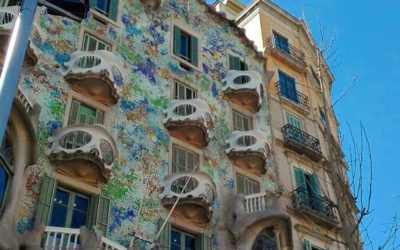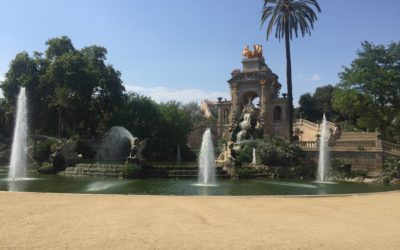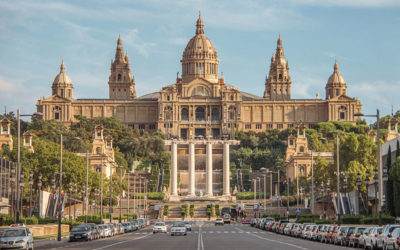Few cities out of countless candidates succeed in winning the opportunity to organize an Olympics event. The whole host process requires extensive preparation along with enormous time commitments together with large financial outlays. The organizers of the 1992 Summer Olympics allowed Barcelona to claim this major hosting opportunity which it addressed expertly.
The organizers of this exceptional Spanish urban center reached a level of Olympic success that hosts cities across the world find difficult to achieve. Planners avoided investing billions of money into costly temporary venues which became unusable afterward resulting in graffiti-covered buildings with unnecessary padlocks.
Smart decision-making characterized city planning during that period. The city employed the Olympic Games as a catalyst to develop their deteriorating industrial harbor area which decades earlier city officials had envisioned. Instead of investing major funds in a brief Olympic event the local planners harnessed Olympic opportunities to establish a massive tourist attraction that would improve lives across the community.
Estadi Olímpic Lluís Companys – The Olympic Stadium
The determination among Olympic administrators to deliver lasting success for the city could possibly be traced back to Estadi Olímpic Lluís Companys. The stadium existed since 1927 to serve the 1929 International Exposition events. Both local organizers and Olympics planners selected it as a focal point in their unsuccessful 1936 Summer Olympics bid competition. Berliner defeated Barcelona to claim the final Summer Olympics event of 1936 resulting in Berlin’s official hosting decision.
The stadium went through yet another disappointing moment. The city officials arranged to stage the People’s Olympiad against Berlin getting the 1936 Olympics to protest against Nazi control. As World War II approached World power continued to build up under Nazi leadership. Event organizers forced the cancellation of the People’s Olympiad when the Spanish Civil War erupted.
The stadium degenerated throughout several years where few used it. An F1 car race threatened cancellation in 1975 because drivers adamantly opposed using the deteriorating stadium as their team paddock site.
As 169 nations marched together during the 1992 Olympics Opening Ceremonies they walked through a completely reconstructed facility that served as the stadium. The stadium’s original exterior walls stayed intact while builders replaced every interior section including all seating areas.
After 56 years Estadi Olímpic Lluís Companys achieved Olympic stadium status to become the first and only stadium that could claim this title. Together with new renovations in 2010 the stadium continues to welcome locals and international visitors to its various events.
La Vila Olímpica del Poblenou – The Olympic Village of Poblenou
Prior to and during the Olympics athletes and their support personnel find lodging and sustenance within these temporary urban developments known as Olympic Villages. Olympic participants treat this experience as their oneShot lifetime event which they will remember forever. During event training time athletes develop new friendships as they train beside each other. Olympics City empties into an abandoned state after the Closing Ceremony concludes. The resourceful metropolis made certain this unacceptable situation never materialized.
Architects used a deteriorating industrial working-class region to build the Olympic Village. The developers transformed an industrial area of old warehouses and factories into a live-work-play area where residents continue to make their home. The elimination of a railway line together eliminated the barrier that had previously blocked seaside access from the district.
A stop to see the Olympic Village should be mandatory for anyone who visits the region.
- The Beach: Shoppers and diners should explore Passeig Marítim followed by stops at Casino Barcelona then experience Peix d’Or while admiring Torre Mapfre and Hotel Arts along with Olympic Swimming Pools and SlowGaudi’s Sagrada Familia.
- The Beach: Beachfront growth required an extensive sand transport operation between Egypt and Barcelona which used many tons of imported Egyptian sand. Magnificent beaches now occupy the site which formerly held a dangerous industrial area and murky facilities. The beach invites visitors to lie hours and soak in the sunlight and swim safely after getting appreciably tanned.
- Eat, Drink and Shop: Tourists combine with local residents to eat lavish dinners at numerous dining spots and meet in neighborhood bars or browse through modern boutiques.
- Passeig Marítim: The promenade stretches entirely along the 5-kilometer coastal line. It’s enjoyed by everyone. You can choose from walking by the water’s edge to running the promenade or trying rollerblading or biking or just experience the waterfront view.
- Casino Barcelona: Feeling lucky? The show and concert entertainment options await anyone who wants to attend one of these events. Do you like Spanish guitars together with flamenco dancing and tasty tapas? Experience the splendor of this massive seaside casino located at Hotel Arts feet which provides memorable evenings when guests dress properly.
- Peix d’Or: World renowned architect Frank Gehry possibly built the biggest goldfish in aquatic history. Your attention will definitely be drawn to this notable metal artwork.
- Torre Mapfre and Hotel Arts: The city’s two highest structures maintain commanding status as skyscrapers. After Olympic celebrations Hotel Arts debuted as a 5-star establishment that granted residents magnificent views. Hotel Arts offers Spanish contemporary art exhibits that passengers having an interest in art will appreciate viewing.
- Olympic Swimming Pools: Guests deploying at the open-air diving pool can gaze at Barcelona’s urban skyline. Kylie Minoque recorded her music video Slow while performing shots at the outdoor diving pool during production.
- Gaudi’s Sagrada Familia: Through its design this cathedral showcases an uncommon approach to Gothic architectural style. Gaudi started building the cathedral in 1882 and construction remains underway until 2026. Completion is scheduled for 2026.
Barcelona received permanent changes from its 1992 Olympic establishment which delivered upgraded quality of life to residents and tourists alike. Explore and appreciate Barcelona’s great historical sites while acknowledging the wisdom of strategic city development through past planning efforts.
Further information can be found at the following resources:
Barcelona Olimpica
1992 Summer Olympics
6 Ways the 1992 Olympics Transformed Barcelona
What Happens to Olympic Venues After the Torch Goes Out
Estadi Olímpic Lluís Companys
Sagrada Familia
Table of Contents




